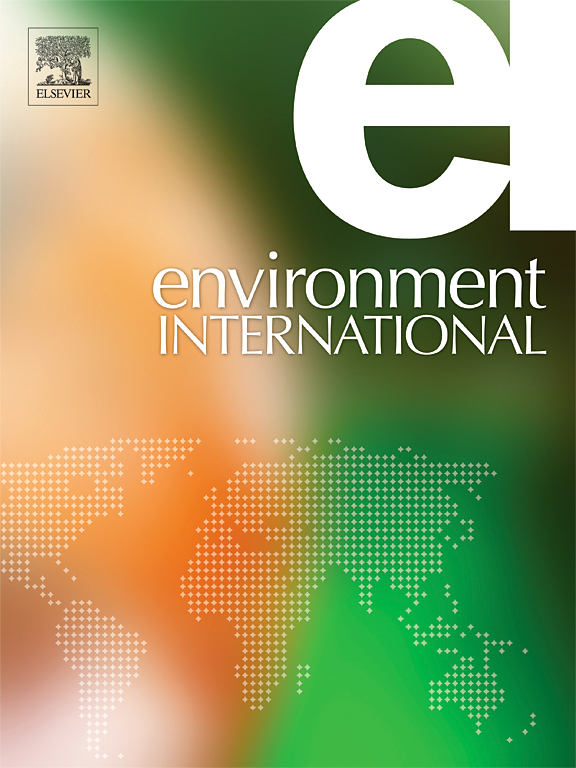大气中的一甲基汞:受观测制约的推断来源及其对人类暴露的影响
IF 10.3
1区 环境科学与生态学
Q1 ENVIRONMENTAL SCIENCES
引用次数: 0
摘要
一甲基汞(MMHg)是一种对人类健康构成威胁的强效神经毒素。MMHg 在地球的各个领域循环,但大气中 MMHg 的来源和归宿尚不清楚。在此,我们建立了一个大气 MMHg 全球模型,该模型整合了目前可用的数据,并指出了当前研究的局限性。根据大气中的观测数据,全球大气中各种来源的 MMHg 为 1.09 亿克/年(不确定范围为 2.05-2474 亿克/年),其中最大的来源是二价汞的云内甲基化(4.75 亿克/年)和 MMHg 海雾(3.95 亿克/年)。由于快速的光脱甲基作用,MMHg 在对流层中的寿命很短,只有 1.9 天。我们的模型表明,海洋中的 MMHg 会净损失到大气中,从而对海洋鱼类中的 MMHg 污染产生解毒作用。不过,这也表明有更多的 MMHg 沉积到陆地上,特别是在人口稠密的沿海地区,从而引入了一种新的风险途径,需要在汞暴露评估中加以考虑。大气在生物地球化学循环和人类健康中发挥着不可忽视的作用,这需要在实施全球《水俣公约》时进一步研究和考虑。本文章由计算机程序翻译,如有差异,请以英文原文为准。
Atmospheric monomethylmercury: Inferred sources constrained by observations and implications for human exposure
Monomethylmercury (MMHg) is a potent neurotoxin that poses a threat to human health. MMHg cycles in all spheres of the Earth but the sources and fate of atmospheric MMHg are unclear. Here, we develop a global model for atmospheric MMHg, which integrates the presently available data and indicates the limitations of the current study. Constrained by the observations in the atmosphere, the global atmospheric MMHg from all sources is 1009 (205–2474 as an uncertainty range) Mg/yr, with the largest sources from the in-cloud methylation of divalent mercury (475 Mg/yr) and MMHg sea spray (395 Mg/yr). MMHg has a short lifetime of 1.9 days in the troposphere due to rapid photo-demethylation. Our model indicates a net loss of marine MMHg to the atmosphere and thus a detoxifying effect on MMHg contamination in marine fish. However, it suggests additional MMHg deposition to the land, particularly in densely populated coastal areas, introducing a new risk pathway that needs to be considered in mercury exposure assessment. The atmosphere plays a non-negligible role in the biogeochemical cycle and human health, which requires further study and consideration in implementing the global Minamata Convention.
求助全文
通过发布文献求助,成功后即可免费获取论文全文。
去求助
来源期刊

Environment International
环境科学-环境科学
CiteScore
21.90
自引率
3.40%
发文量
734
审稿时长
2.8 months
期刊介绍:
Environmental Health publishes manuscripts focusing on critical aspects of environmental and occupational medicine, including studies in toxicology and epidemiology, to illuminate the human health implications of exposure to environmental hazards. The journal adopts an open-access model and practices open peer review.
It caters to scientists and practitioners across all environmental science domains, directly or indirectly impacting human health and well-being. With a commitment to enhancing the prevention of environmentally-related health risks, Environmental Health serves as a public health journal for the community and scientists engaged in matters of public health significance concerning the environment.
 求助内容:
求助内容: 应助结果提醒方式:
应助结果提醒方式:


